Arena Footing: You Have Questions, We Have Answers
Arena footing is an important investment in your horse’s soundness and performance. Here, we answer some of the most common questions about riding arena footing.
What constitutes safe arena footing?
Safe arena footing is an even, stable, and cushioned surface, watered daily to eliminate dust. The proper arena surface gives the horse confidence and ease to perform.
What layers does a proper riding arena consist of?
Layer #1: The arena base is the first and very important phase for indoor and outdoor arenas and is often overlooked. Choosing the correct arena base material is imperative in building a functional indoor or outdoor arena. Building an outdoor riding arena base differs from the indoor arena base specs due to varying weather conditions and needs. Therefore, consulting a professional who is experienced in building horse arenas in your area is important.
Layer#2: The footing is the second layer of your riding arena. It usually consists of a fine sand without any clay and silt, plus a sand additive to stabilize and cushion the arena sand.
What is an appropriate base for a riding arena?
Simply put: A solid foundation. This differs for indoor and outdoor arenas, and is also dependent upon the type of drainage you choose.
For an outdoor arena with surface drainage:
The arena base is installed on compacted natural ground consisting of 4-5 inches of class 2 base and 3 inches of stonedust or decomposed granite. Both should be compacted to 95% with a slope of 1%. Additionally, the base should be extended by one foot beyond the fence line or the base layers can be framed with the lower kick board of your fence.
For an outdoor arena with vertical drainage:
This type of arena base allows you to ride even after heavy rainfall, as the base is built upon permeability. A 4-inch gravel layer is laid upon the natural soil. Then, the permeable layer —like HIT DrainGrid Pavers — is installed as the permanent separation layer between the gravel and the sand footing.
For an indoor arena base:
A standard base consists of 4 inches of a rock dust or decomposed granite compacted to 95%. If you’d like to add more cushioning from the base up, we recommend using arena base mats or the HIT Grid System.
What are the types of footing additives and which is the best?
There are a number of additives available for your arena sand, but not all of them are created equal. Popular options include:
- Geotextile sand additives. Geotextiles have changed the industry for riding arena footings in the last 15 years in the US. Europe was the frontrunner using this type of geo for over 25 years. Geotextile arena footing consists of a blend of high-quality sand and polyester geotextiles. It provides the perfect balance of stability and cushioning in arena surfaces. Made of polyester, the geotextiles will NOT decompose and disappear over time, but stay put in the sand.
- Wooden chips. Wood chips are an economical and natural option. It will give you a nice bounce in the beginning, but as time goes by you will have decomposed dust in your arena because of wood’s organic nature.
- Rubber. Rubber is another sand additive commonly used in horse arenas, which ads cushioning to the sand surface.
What is equestrian sand?
Officially, there is no such term as ‘equestrian sand’ and has no ASTM specifications. Local sand suppliers and quarries often sell sand used for general equestrian applications, be it for paddocks or arenas. To achieve optimal performance, it is imperative to involve a footing expert to choose the right sand for your arena. This sometimes requires trucking in sand from further away. Sand is the #1 ingredient for good arena footing – so be sure to get the footing experts’ advice.
How much sand do I need for a horse arena and how deep should the sand be?
The depth of arena footing sand depends on the sand quality and the riding discipline. Usually, 3-4 inches of a fine sand is used for dressage and jumping arenas with a geotextile sand additive. For plain sand arenas, 2-3 inches of a fine sand is recommended. Again, always consult with an experienced riding arena builder to select the correct sand and its depth. A coarse sand will shift around a lot and should not be deeper than 2 inches. Sand that is too fine usually contains a high amount of silt and clay and will not drain very well. Quartz sands on the other hand, can be very fine and still permeable, and is the sand of choice.
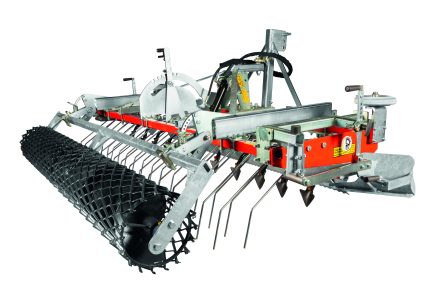
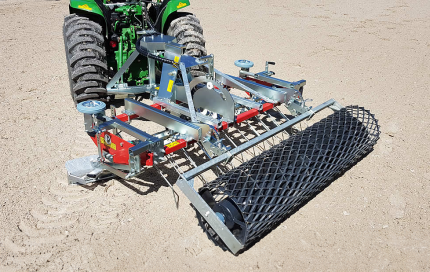
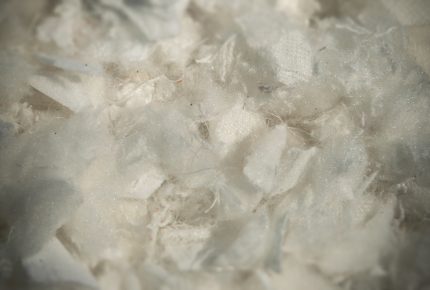
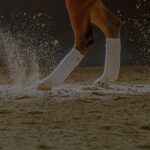 Geotextile Arena Footing
Geotextile Arena Footing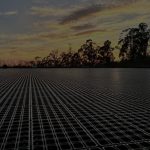 Subsurface Irrigation
Subsurface Irrigation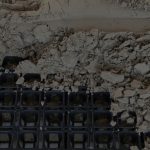 Arena Base Systems
Arena Base Systems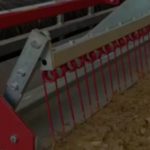 Arena Drags & Groomers
Arena Drags & Groomers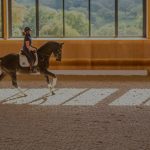 Mirrors and Kickwall
Mirrors and Kickwall Horse Wellness
Horse Wellness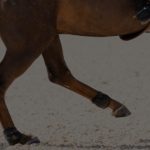 Dust Control
Dust Control